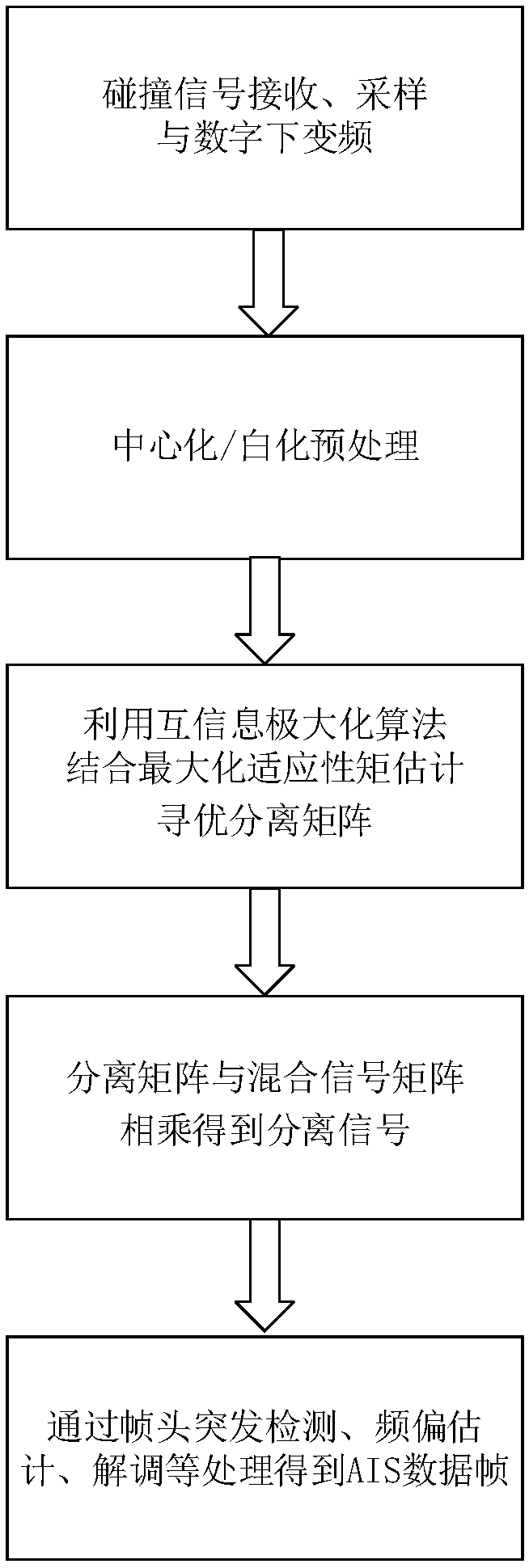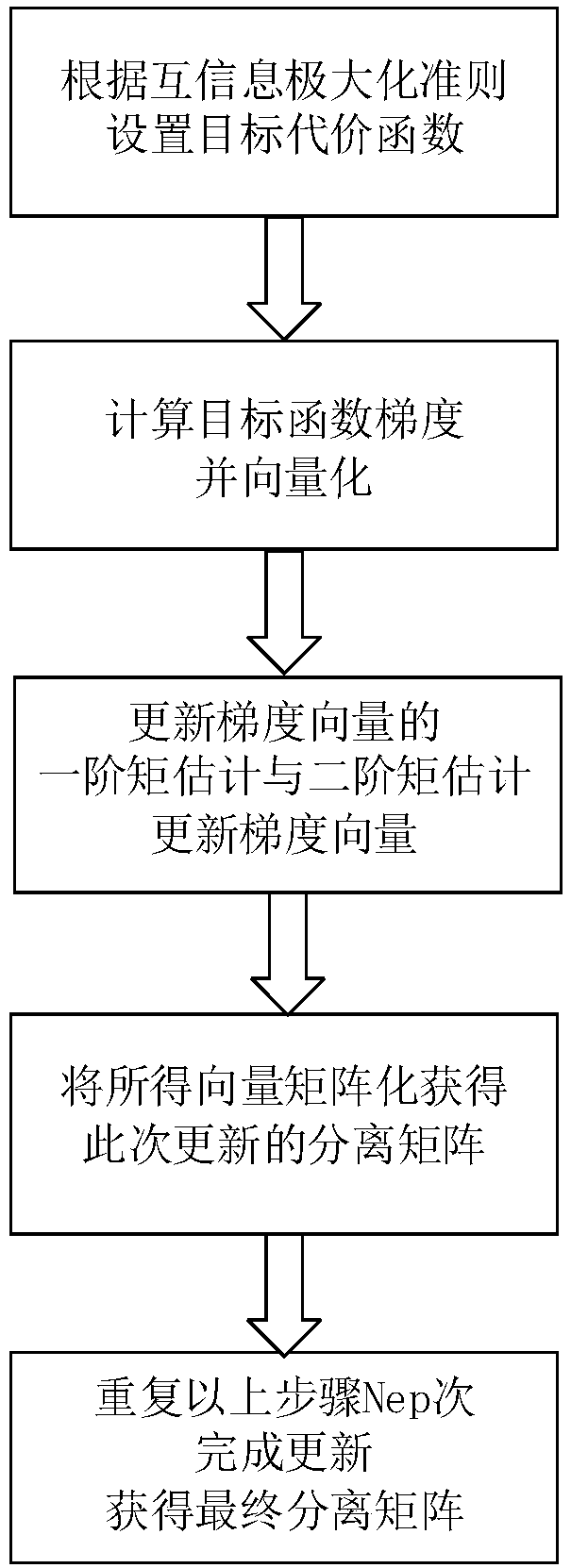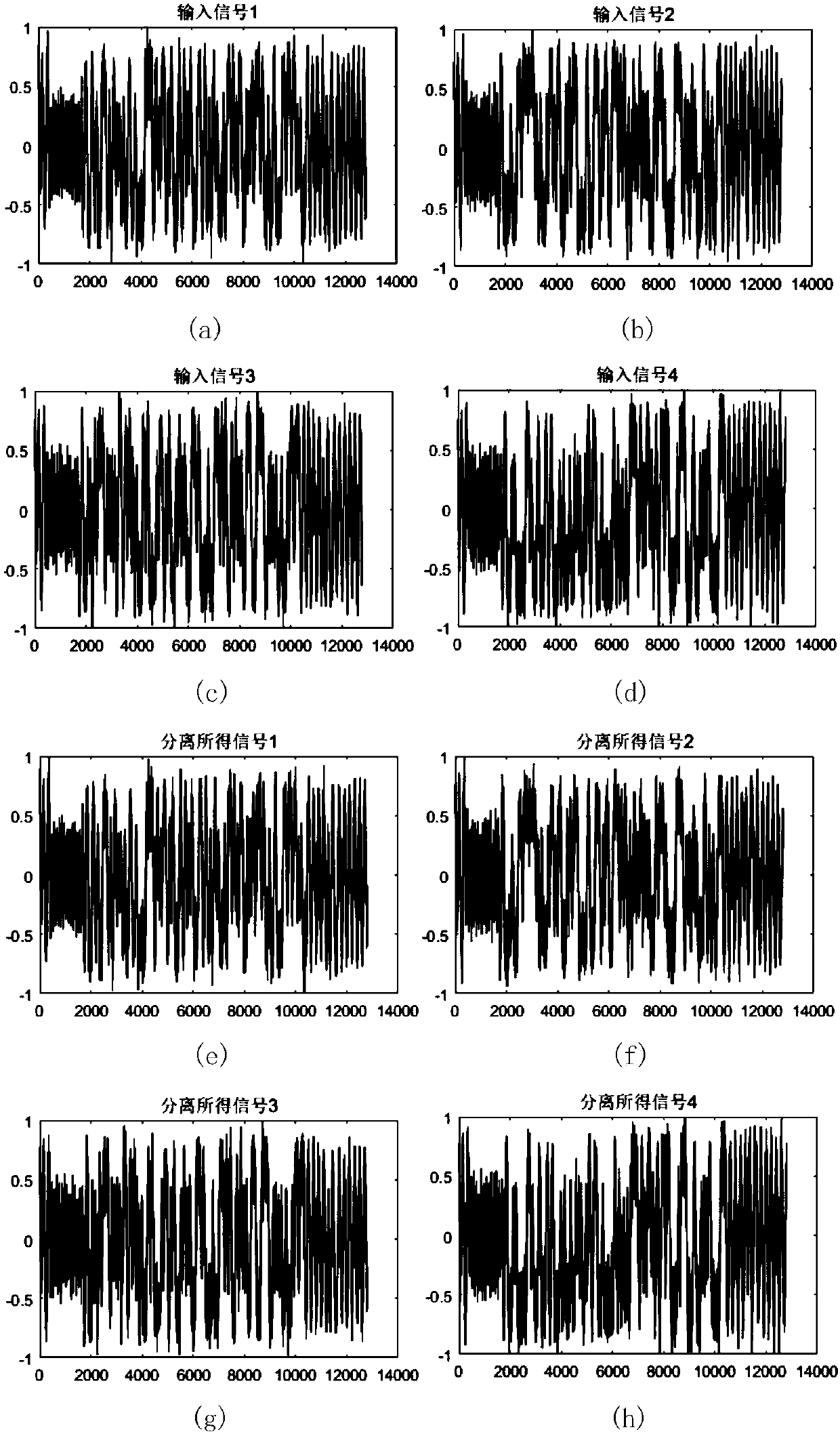Satellite-borne AIS collision signal separation method based on adaptive moment estimation
A technology of collision signal and separation method, which is applied in the baseband system, baseband system components, shaping network in the transmitter/receiver, etc., can solve the problem of inability to effectively solve the collision and separation of multi-channel signals, the inability to effectively solve the signal, and real-time performance. Poor and other problems, achieve good global selectivity and real-time performance, realize self-adaptation, and reduce the required time
- Summary
- Abstract
- Description
- Claims
- Application Information
AI Technical Summary
Problems solved by technology
Method used
Image
Examples
Embodiment
[0063] The specific condition of this embodiment is: set N in the antenna array with N mutually independent antennas to 4, that is, N=4, then there are 4 mutually independent antennas receiving AIS collision signals.
[0064] Under the simulation condition that the number of source signals is the same as the number of received signals, after the received four-way AIS collision signals collide and arrive at the receiver, the spaceborne AIS collision signal separation method based on adaptive moment estimation of the present invention is used to separate the four-way received signals , comparing the waveforms of the four received signals with the separated signal waveforms as shown in image 3 As shown, at this time, the signal-to-noise ratio (SNR) is 10dB, and the signal amplitudes have been normalized. Depend on image 3 It can be seen that the waveforms of the two are basically the same, the distortion is small, and the four received signals have achieved relatively good sep...
PUM
 Login to View More
Login to View More Abstract
Description
Claims
Application Information
 Login to View More
Login to View More - R&D
- Intellectual Property
- Life Sciences
- Materials
- Tech Scout
- Unparalleled Data Quality
- Higher Quality Content
- 60% Fewer Hallucinations
Browse by: Latest US Patents, China's latest patents, Technical Efficacy Thesaurus, Application Domain, Technology Topic, Popular Technical Reports.
© 2025 PatSnap. All rights reserved.Legal|Privacy policy|Modern Slavery Act Transparency Statement|Sitemap|About US| Contact US: help@patsnap.com



